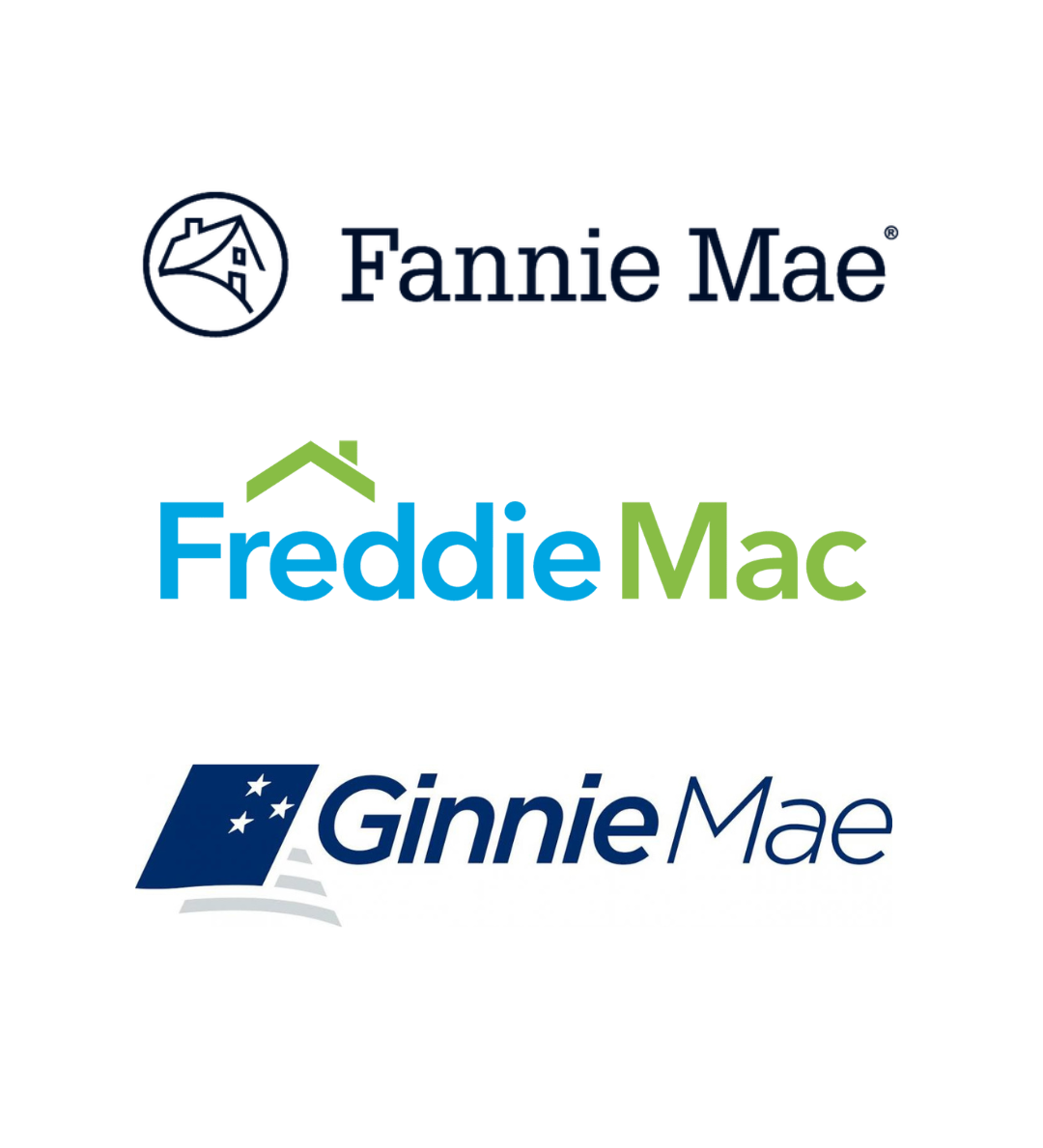MORTGAGE RATES, TARIFF NEWS, AND VOLATILITY WHEN IS IT A GOOD TIME TO REFINANCE?

How to Get the Best Mortgage by Understanding Fannie Mae, Freddie Mac, and Ginnie Mae
By Andy Harris, President of Vantage Mortgage Brokers
I’ve been in the mortgage industry for over 22 years. So much has changed during this time, yet so much remains the same. My team and I have always embraced a strong focus on education over sales. When a consumer considers taking the most significant debt of their lifetime, financial education is vital when securing and understanding new loan terms and options. Essentially, in an industry where people are ‘sold’ a debt, we instead persistently educate them on how this new debt works under the agency commodity rule.
My initial conversation with clients during our first meeting has been the same for decades. Whether they are first-time homebuyers, repeat buyers, investors, or simply refinancing an existing mortgage, the most essential message has stayed the same. They must understand who Fannie Mae, Freddie Mac, Ginnie Mae, and private investors are and how mortgage financing and amortization work in the United States. While we serve the Pacific NW exclusively (Oregon, Washington, and Idaho), these details apply to all consumers in the United States when financing residential real estate.
Most residential mortgage loans are backed by these three agencies, and the rest by private lenders and private-label mortgage-backed securities. This means lenders offering these agency-backed loans use temporary warehouse lines of credit.
A lender warehouse line (or warehouse line of credit) is a type of short-term funding that mortgage lenders use to finance loans until they can be sold to investors or other financial institutions, such as Fannie Mae, Freddie Mac, or private buyers. Here’s how it works:
- Funding New Loans: When a mortgage lender issues a loan to a borrower, they typically draw funds from a warehouse line provided by a bank or financial institution. This allows them to fund the loan without using their own capital.
- Short-Term Holding: The lender “warehouses” the loan on its balance sheet for a short period, usually just a few weeks or months. During this time, the lender prepares the loan for sale on the secondary market or directly to investors like Fannie Mae or Freddie Mac.
- Repayment of Warehouse Line: Once the lender sells the loan, the proceeds go toward repaying the warehouse line, and the lender can re-use this line of credit to fund new loans.
- Interest and Fees: Warehouse lenders (often banks) charge interest and sometimes fees on the line of credit, which adds to the cost of mortgage origination. However, the process allows mortgage lenders to make more loans than they could if they only relied on their own cash reserves.

So why is this important for all consumers to understand? Good question. The agencies set guidelines and requirements for all lenders to buy or insure these mortgage loans. An automated underwriting system approves the consumer loan application all lenders use, and the process is commoditized to offer liquidity for US consumers. Desktop underwriting is run with the application’s analytics, which is then supported by an underwriter reviewing income, assets, and other qualifying and verification documents of the data run. Once the lender is confident the agency will back the loan with the information they have, they will authorize to fund that loan for recording and follow the steps notated above to release from credit lines… rinse and repeat.
If the agency does not back the loan under these circumstances, the lenders will not approve or close the loan. This means that the “lender,” in this case, is more of a pass-through with checks and balances to the actual money source and decision-makers. We view lenders then more as “logos” to the agencies where competition between these logos is essential for our clients. Consumers must look past the lender and understand the relationship between the Mortgage Loan Originator (MLO) they are speaking with and any lender that may be involved in the process ultimately backed by the same agencies. This could include sales terms like “Direct Lender,” “In-House Underwriting,” or Mortgage “Banker.” These titles and terms may sound like control, but they are just the opposite, as any terms like “direct” or “bank” are misleading when temporary credit lines are not the ultimate decision-makers.
When you start speaking with or reaching out to a Mortgage Loan Originator (many titles are used), do you know if they work for you, or do they work for the lender/logo? Does one lender employ them, or can they analyze and shop multiple rate sheets and options independently and are not employed by a lender? Remember, one lender produces only one rate sheet, and the margins can vary considerably between these lenders. While the same agencies back your conventional or government mortgage loan, lenders will set their rate sheets and margins based on target profits off these credit lines. These variances can and will directly impact your mortgage rate offerings and fees, which is why lender competition must be embraced.
Mortgage originators will be either captive (employed by a lender in retail) or independent (a shopping partner with multiple wholesale lenders). Remember that it is always your choice who you hire. It’s great to ask for referrals, but never be ‘steered’ blindly by not following this rule of agency awareness. Ask questions, shop your mortgage, and recognize through agency awareness how to avoid lender (logo) salespeople and find persistent independent educators.
Check out more information about this topic in our video “How to Get the Best Mortgage” HERE
Fannie Mae, Freddie Mac, and Ginnie Mae are government-sponsored enterprises (GSEs) and agencies that play essential roles in the U.S. housing finance system by facilitating liquidity in the mortgage market. Here’s a breakdown of each:

Fannie Mae (Federal National Mortgage Association)
– Background: Founded in 1938 during the Great Depression as part of the New Deal, Fannie Mae was created to increase liquidity in the mortgage market.
– Role: Fannie Mae buys mortgages from lenders, bundles them into mortgage-backed securities (MBS), and then sells these securities to investors. This process allows lenders to free up capital and continue issuing new mortgages.
– Focus: Primarily supports conventional mortgages that conform to certain underwriting standards (i.e., “conforming loans”).
– Ownership: Operates as a publicly traded company but is under federal conservatorship since the 2008 financial crisis.
Freddie Mac (Federal Home Loan Mortgage Corporation)
– Background: Created in 1970 to expand the secondary mortgage market, particularly for loans from savings and loan institutions, which traditionally had limited access to Fannie Mae’s services.
– Role: Similar to Fannie Mae, Freddie Mac purchases mortgages, pools them into MBS, and sells them to investors. This adds liquidity to the housing market and promotes affordable housing.
– Focus: Primarily deals with conforming loans, similar to Fannie Mae.
– Ownership**: Also a publicly traded company placed under federal conservatorship since the 2008 crisis.
Ginnie Mae (Government National Mortgage Association)
– Background: Established in 1968 as a part of the U.S. Department of Housing and Urban Development (HUD).
– Role: Ginnie Mae does not buy or sell loans or issue MBS. Instead, it provides a government guarantee for MBS issued by approved lenders that contain federally insured or guaranteed loans (such as FHA, VA, and USDA loans).
– Focus: Primarily supports loans that serve lower-income borrowers and veterans, providing a guarantee to investors on these MBS, which protects them from losses in case of borrower defaults.
– Ownership: Fully government-owned, as part of HUD, and not under conservatorship or traded publicly.
Summary
– Fannie Mae and Freddie Mac both buy and securitize mortgages, primarily conventional conforming loans, to support liquidity for private lenders.
– Ginnie Mae does not buy or issue mortgages but instead guarantees securities backed by government-insured loans, promoting stability for lower-income and veteran borrowers.
These entities make mortgages more accessible, promote homeownership, and support affordable housing while ensuring stability in the mortgage market.
As of recent data, Fannie Mae, Freddie Mac, and Ginnie Mae together back the vast majority of mortgage loans in the U.S., covering nearly 70% of the mortgage market. Here’s a general breakdown of their shares:
- Fannie Mae: Approximately 35-40% of the mortgage market.
- Freddie Mac: Roughly 20-25% of the mortgage market.
- Ginnie Mae: Around 10-15% of the mortgage market.
These three entities back a combined 65-75% of the U.S. mortgage market, with the remainder covered by private lenders, credit unions, banks, and private-label mortgage-backed securities.



